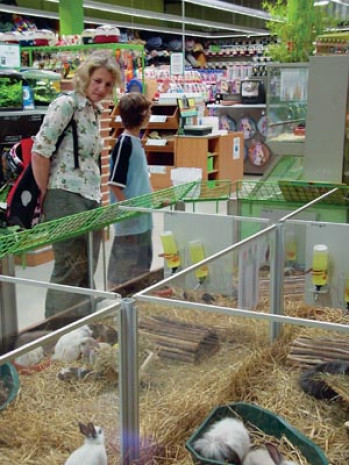The 16 million inhabitants of the Netherlands have 3 mio cats and 1.5 mio dogs, according to estimates by Euromonitor International. These figures have changed little in the last few years. Almost 26 per cent of all Dutch households have at least one pet. The fact that 46 per cent of all pets owned are cats is explained by the relative unwillingness of Dutch pet owners to invest much time in their hobby. While the dog and cat populations have risen slightly, ornamental birds, fish and reptiles have even declined slightly. Rodents and other small animals continue to grow in popularity.Small animals are rapidly growing in popularity in the NetherlandsLow levels of growth were recorded in all product groups in 2004, the overall market growing by 3 per cent to € 716 mio. Of this figure, dog and cat food accounts for € 589 mio. Although the demand for low-priced economy products has increased markedly, there has been growth in the premium and super-premium segment too.Masterfoods Netherlands, with a share of approx. 35 per cent of sales, is the market leader in the pet food sector. The company has its own factory at its head office in Veghel. Its principal competitor is Nestlé Purina Pet Care, the Dutch arm of which is based in Zwijndrecht. Other leading firms in the Dutch pet product market are Witte Molen, which belongs to the Dutch agricultural group Alanheri, the Siber-Hegner Group and Vitakraft, which has had its own branch based in Eerbeck since 1989.The cat is by far the most popular pet in the Netherlands, especially in single- and two-person households. At 72 per cent, the market coverage of industrially produced food is considerably higher for cats than for the dog segment, where such food achieves a market share of just 37 per cent. Even if dry products are strongly on the up, the cat food market continues to be dominated by moist food. Above all, there has been a trend for some years now towards single-serve products, which enjoy a market share of over 40 per cent in the moist food segment. Sales of brands such as "Sheba" and "Gourmet" are developing well. The growth of single-serve products has taken place primarily at the expense of tinned products, which are sharply in decline. Cat treats, too, are gaining in popularity in the Netherlands and the growth of this product group up to 2009 is estimated at over 30 per cent. The leading suppliers have accordingly expanded their range in this segment. The assortment of premium products in particular is…



